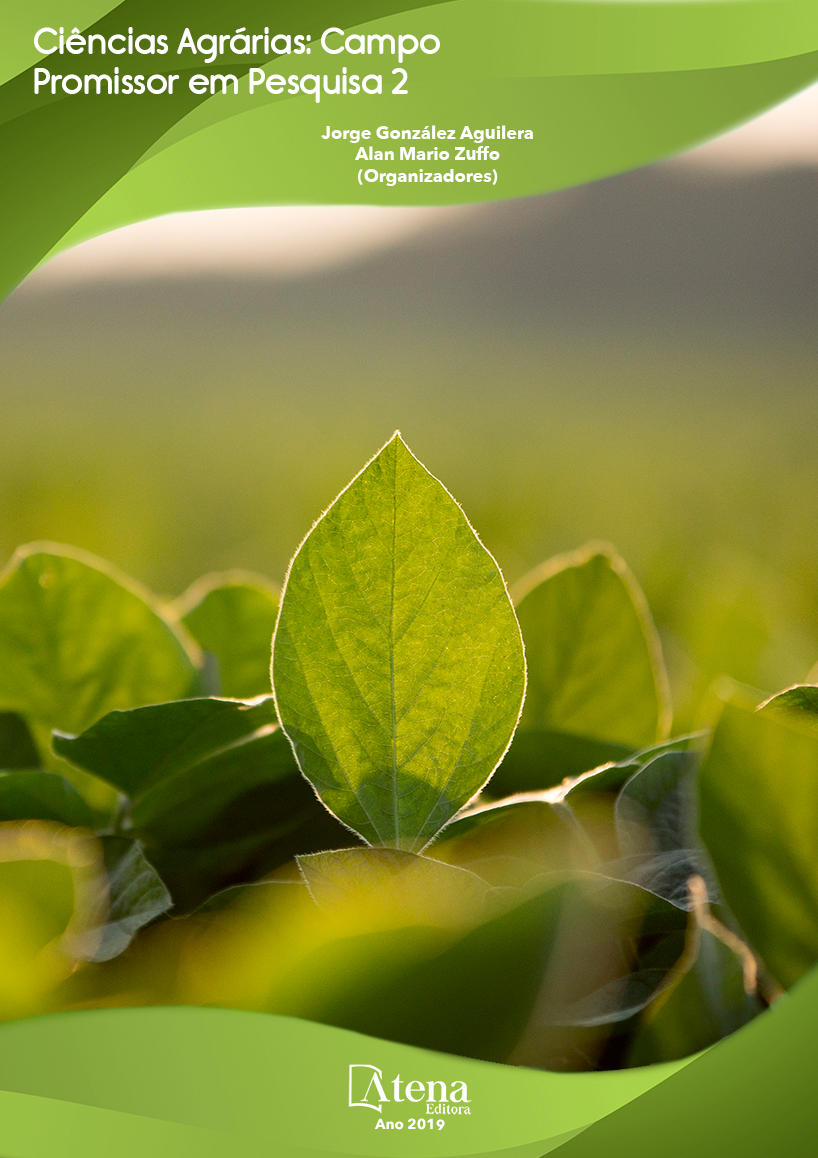
PRODUÇÃO DO TOMATE CEREJA EM AMBIENTE PROTEGIDO SOB INFLUÊNCIA DA LÂMINA DE IRRIGAÇÃO E ADUBAÇÃO ORGÂNICA
O objetivo desse estudo foi avaliar
os aspectos morfológicos do tomate cereja na
região oeste do estado do Rio Grande do Norte
sob diferentes níveis de reposição hídrica e
dosagens de adubação orgânica. O experimento
foi conduzido, em casa de vegetação, cultivado
em vasos plásticos de 10 L, na Universidade
Federal Rural do Semi-Árido-UFERSA, no
município de Mossoró/RN. Os tratamentos
consistem na combinação fatorial 5x3, cinco
lâminas de água: L1 = 70%, L2 = 80%, L3 = 90%,
L4 = 100% e L5 = 120% da ET0 e três dosagens
de adubação orgânica: T1 = solo + 10% de
Bio Adubo, T2 = solo + 20% de Bio Adubo e
T3 = testemunha (sem adubação). A produção
da cultura foi analisada através das seguintes
variáveis: Número de Flores por Planta (NFLP),
Número de Cachos por Planta (NCP), Número
de Fruto por Planta (NFRP) e Peso Total de
Frutos por Planta (PTFP) em gramas. Os
dados coletados foram submetidos à análise de
variância pelo teste F e, quando significativo,
feito à análise de regressão ao nível de 5% de
probabilidade. De um modo geral, observouse
que a incorporação da adubação na cultura
do tomate cereja contribuiu de forma eficiente
para produção em todas as fases do ciclo. A
produção do tomate cereja de forma geral, não
é influenciado pela interação entre os fatores
lâmina de irrigação e dosagem de matéria
orgânica, exceto para o número de cacho por
planta. O tomate cereja também é influenciado
diretamente pela dosagem de matéria orgânica,
independentemente da lâmina de irrigação.
PRODUÇÃO DO TOMATE CEREJA EM AMBIENTE PROTEGIDO SOB INFLUÊNCIA DA LÂMINA DE IRRIGAÇÃO E ADUBAÇÃO ORGÂNICA
-
DOI: 10.22533/at.ed.16019200618
-
Palavras-chave: Manejo de irrigação, Produtividade, Tomateiro
-
Keywords: Irrigation management, Productivity, Tomato
-
Abstract:
The aim of this study was to
evaluate the morphological aspects of cherry
tomatoes in West region of the Rio Grande do Norte state in different hydric replacement
levels and dosages of organic fertilization. The experiment was conducted in a
greenhouse, cultivated in plastic pails of 10 L, at the Federal Rural University of the
Semiarid – UFERSA, in the city of Mossoró. The treatments consists in 5x3 factorial
combination, five water laminas: L1 = 70%, L2 = 80%, L3 = 90%, L4 = 100% and
L5 = 120% of ET0 and three dosages of organic fertilization: T1 = soil + 10% of Bio
Fertilizer, T2 = soil + 20% of Bio Fertilizer and T3 = attestant (without fertilization). The
production of culture was analyzed using the following variables: Number of Flowers
per Plant (NFLP), Number of Clusters per Plant (NCP), Number of Fruit per Plant
(NFRP) and Total Weight of Fruits per Plant (TWFP) in grams. The collected data
were subjected to analysis of variance by F test and, when significant, it was done
regression analysis at 5% probability. In general, it was observed that the incorporation
of fertilization on culture of cherry tomato contribute, efficiently, to production at all
stages of the cycle. The production of cherry tomatoes in general is not influenced by
the interaction between the factors irrigation blade and organic matter dosage, except
for the number of bunch per plant. The cherry tomato is also influenced directly by the
dosage of organic matter, regardless of the irrigation blade.
-
Número de páginas: 15
- Liherberton Ferreira dos Santos
- Silvanete Severino da Silva
- Rutilene Rodrigues da Cunha
- Roberto Vieira Pordeus
- Aline Daniele Lucena de Melo Medeiros


